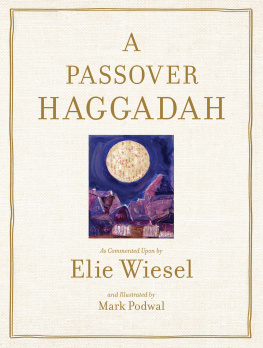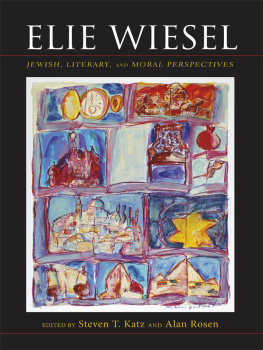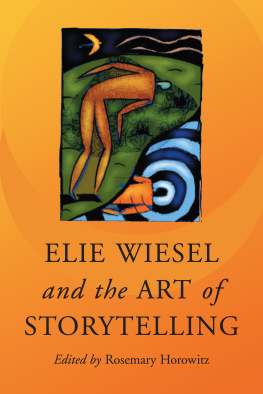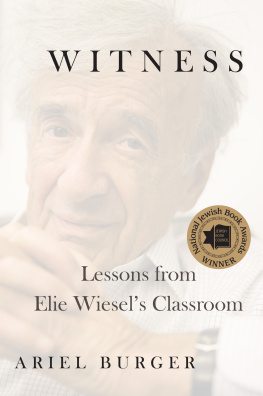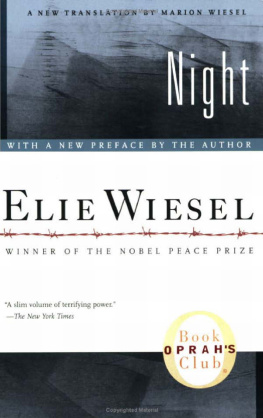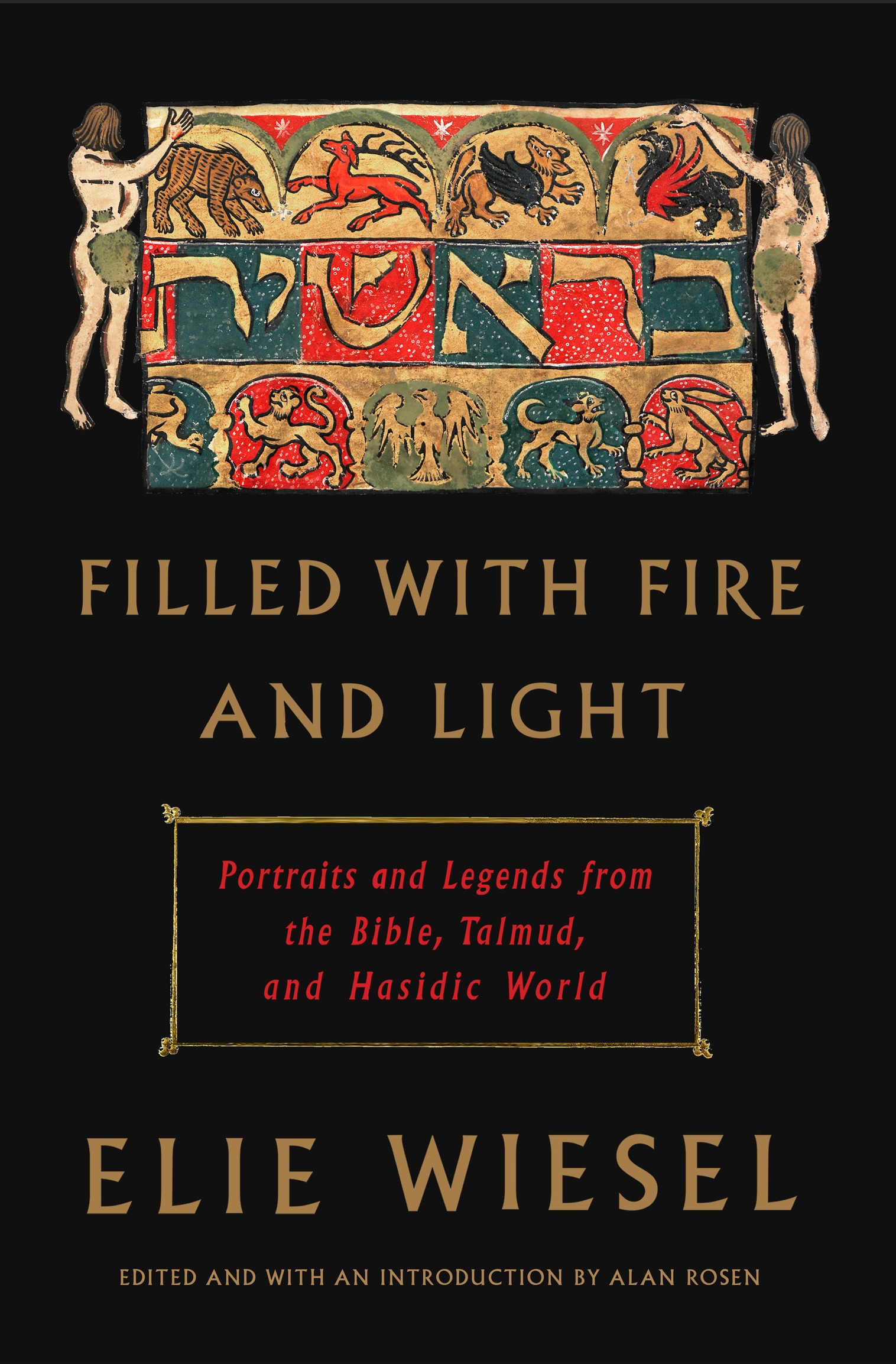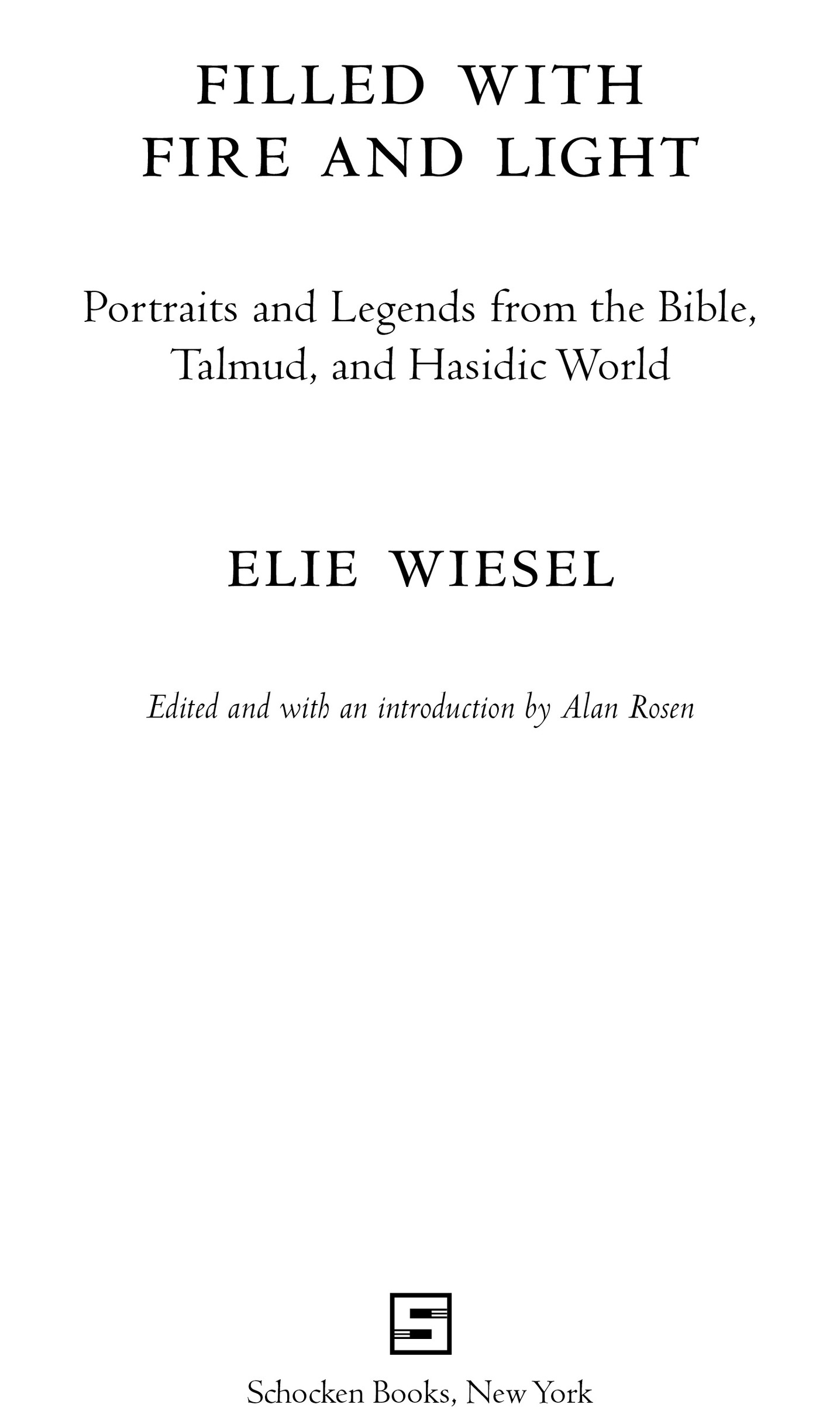books by elie wiesel
Night
Dawn
The Accident
The Town Beyond the Wall
The Gates of the Forest
The Jews of Silence
Legends of Our Time
A Beggar in Jerusalem
One Generation After
Souls on Fire
The Oath
Ani Maamin (cantata)
Zalmen, or The Madness of God (play)
Messengers of God
A Jew Today
Four Hasidic Masters
The Trial of God (play)
The Testament
Five Biblical Portraits
Somewhere a Master
The Golem (illustrated by Mark Podwal)
The Fifth Son
Against Silence (edited by Irving Abrahamson)
A Song for Hope (cantata)
Twilight
The Six Days of Destruction (with Albert Friedlander)
A Journey into Faith (conversations with John Cardinal OConnor)
From the Kingdom of Memory
Sages and Dreamers
The Forgotten
A Passover Haggadah (illustrated by Mark Podwal)
All Rivers Run to the Sea
And the Sea Is Never Full
Memoir in Two Voices (with Franois Mitterrand)
King Solomon and His Magic Ring (illustrated by Mark Podwal)
Conversations with Elie Wiesel (with Richard D. Heffner)
The Judges
Wise Men and Their Tales
The Time of the Uprooted
A Mad Desire to Dance
Rashi
The Sonderberg Case
Hostage
Open Heart
It Is Impossible to Remain Silent (with Jorge Semprun)
The Tale of a Niggun (illustrated by Mark Podwal)
Copyright 2021 by Elirion Associates, Inc.
All rights reserved. Published in the United States by Schocken Books, a division of Penguin Random House LLC, New York, and distributed in Canada by Penguin Random House Canada Limited, Toronto.
Schocken Books and colophon are registered trademarks of Penguin Random House LLC.
A Different Master: Rabbi Uri of Strelisk, the Seraph originally appeared, in slightly different form, in Dialogically Speaking: Maurice Friedmans Interdisciplinary Humanism, edited by Kenneth Paul Kramer (Eugene, Oregon: Wipf and Stock, 2011).
Library of Congress Cataloging-in-Publication Data
Names: Wiesel, Elie, 19282016, author. Rosen, Alan, editor.
Title: Filled with fire and light : portraits and legends from the Bible, Talmud, and Hasidic world / Elie Wiesel ; edited and with an introduction by Alan Rosen.
Description: First edition. New York : Schocken Books, 2021
Identifiers: lccn 2021000031 (print). lccn 2021000032 (ebook). isbn 9780805243536 (hardcover). isbn 9780805243543 (ebook)
Subjects: lcsh : BibleBiography. TalmudBiography. HasidimBiography.
Classification: lcc bs 571 . w 5467 2021 (print) | lcc bs 571 (ebook) | ddc 296.1/200922dc23
lc record available at lccn.loc.gov/2021000031
lc ebook record available at lccn.loc.gov/2021000032
Ebook ISBN9780805243543
www.schocken.com
Cover image copyright Veneranda Biblioteca Ambrosiana
Cover design by Tyler Comrie
ep_prh_5.8.0_c0_r0
CONTENTS
Introduction
Alan Rosen
The present volume consists of adaptations from nine public lectures that were not included in the seven collections that appeared during Elie Wiesels lifetime. Wiesel focused in his lectures on the study of Jewish tradition, on Torah in the broader sense of the word: the Bible, the Talmud, Hasidism, and related topics. For Wiesel, study of any kind was a celebration, and Torah-centered study was a celebration of a special sort. Moreover, one of the frequent subjects of the lectures, Hasidism and Hasidic masters, emphasized celebration as an essential dimension of Jewish life. The fact that Wiesel was himself a Hasid guided his inspired, almost song-filled approach to study and life.
Such an emphasis may seem to fly in the face of Wiesels dedication to the memory of the Holocaust. But in truth, it went hand in hand with this commitment. As he often said, How can I oppose death if not by celebrating life? Every word of every lecturecelebrating study in general, study of the Torah in particular, and, above all, the precious nature of lifethus served as the necessary counterpart to Wiesels unflinching loyalty to Holocaust memory.
Wiesel began giving his public lectures in 1967, at the 92nd Street Y in New York City and at several venues in Paris. A decade later, in 1976, he began teaching and lecturing at Boston University as well. At the Y he gave four lectures a year; eventually (most likely because of increasing commitments) these were whittled down to one per year. His final lecture was delivered at the Y in November 2014.
Over time, Wiesel experimented with the format of the lectures: sometimes it was an interview conducted by a friend or colleague, sometimes a question-and-answer session with the audience; sometimes he would focus on a theme as opposed to an individual. On a few memorable occasions he would sing selections from his favorite Hasidic melodies. His goal was, essentially, to convey his messages of hope, memory, and the joy of study. To begin anew and to begin again were among Wiesels recurring motifs, an exacting standard that appeared to push him toward greater heights of achievement and a passion for innovation. This principle likely inspired his experiments with diverse lecture formats, approaches, and material, in search of the most effective mode of expression.
The lectures were a premier forum for Wiesels teachingthe vocation that, along with that of witness, meant most to him. In time, he would become a classroom teacher. But the lecture hall was his first regular teaching arena and lasted almost until the end of his life. In 1972, Wiesel published his first collection of lectures, Souls on Fire: Portraits and Legends of Hasidic Masters. His next collection, Messengers of God: Biblical Portraits and Legends, published in 1976, focused on figures from the Bible. Later collectionsSages and Dreamers (1991) and Wise Men and Their Tales (2003)added Talmudic personalities to the mix, placing these three strands of Jewish tradition side by side. The present volume is modeled on its predecessors, in both form and spirit.
The nature of these narratives is uniquely Wiesels, that of biographical portraits and legends. Each recounts significant events from the life of a biblical personage, Talmudic sage, or Hasidic master whose contribution to the Jewish experience has been profound, distinctive, exemplary, and eternal. In some cases, the details of his subjects life are fairly well known; in others, they are obscure. From a multitude of sources, Wiesel culls facts, legends, incidents, and anecdotes, distilling reams of information on his subjects family and friends, teachers and students, obsessions and antipathies. His purpose is not simply to set down biographical data but to show why it is important for ustoday, nowto become acquainted with these extraordinary figures from the past. In telling the stories of spiritual giants, Wiesel wants to inspire us in our own quests for knowledge, in our own efforts to experience unbounded compassion for others, in forming our own bold visions for the future of the Jewish people, in resolving to live a meaningful life after suffering immense personal loss or witnessing collective catastrophe.





